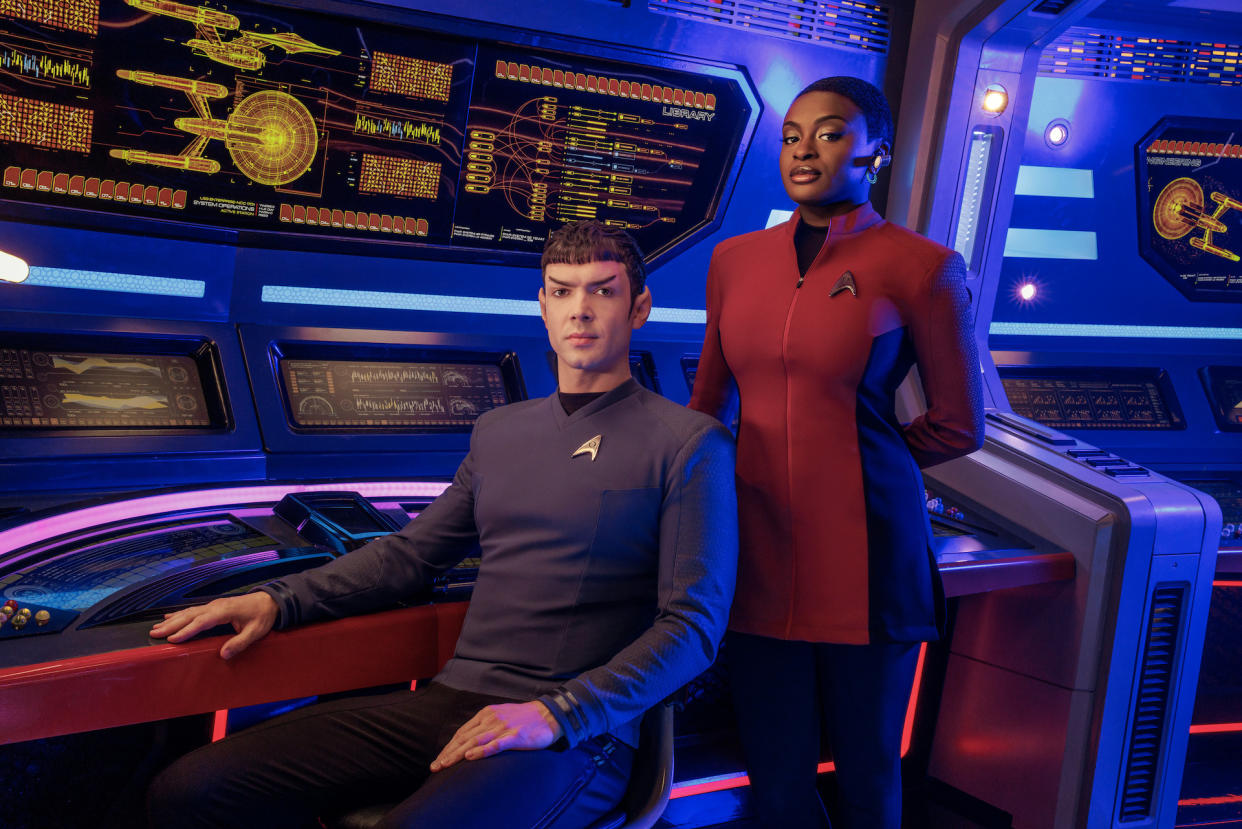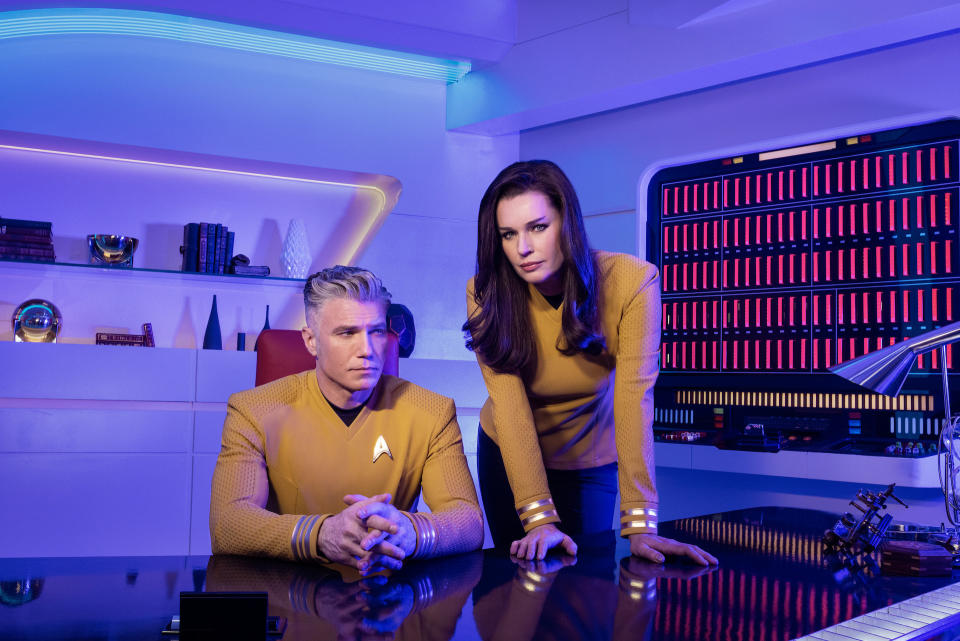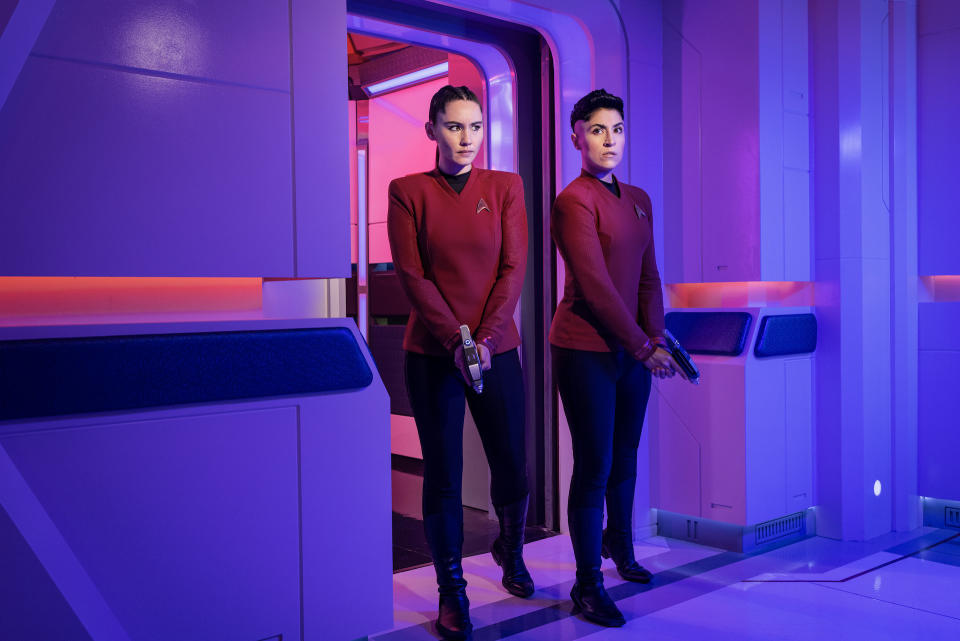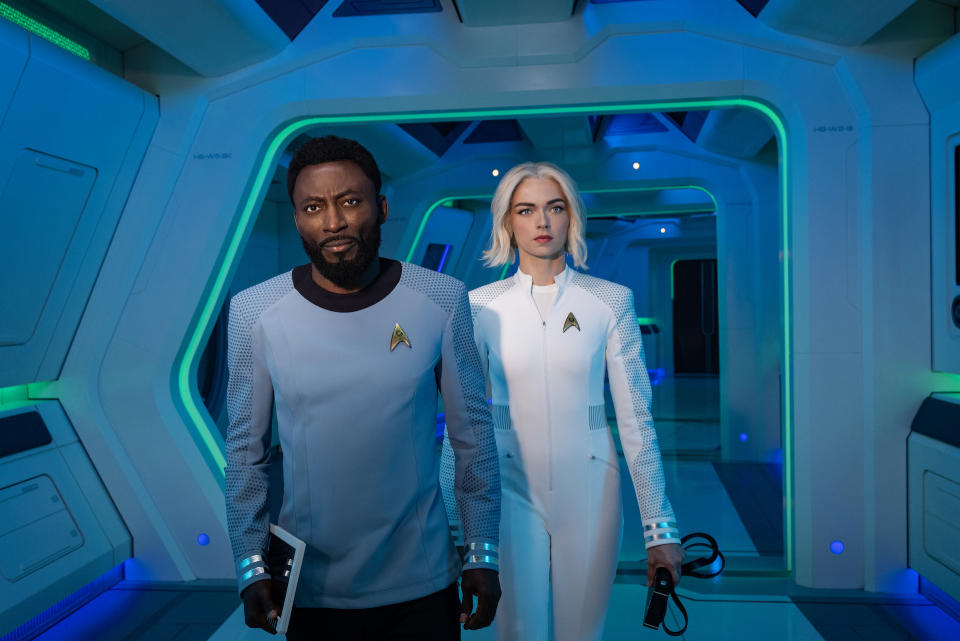‘Star Trek: Strange New Worlds’ Review: Season 2 Offers Classic Episode After Classic Episode

A franchise that’s producing as much as “Star Trek” is right now shouldn’t be this good.
A year ago, “Strange New Worlds” debuted and delivered the best first season of a “Trek” show since “The Original Series.” Then “Picard” ended on a soaring and soulful note, leaving fans desperate for more. And now “Strange New Worlds” is back for Season 2, delivering the kind of character-driven episodic sci-fi that now seems downright revolutionary in the serialized streaming era.
More from IndieWire
'Only Murders in the Building' Season 3 Is a Smartly Staged Celebration of Actors
'Star Trek: Strange New Worlds': 'Subspace Rhapsody' Is TV's Best Musical Episode Since 'Buffy'
Each one of these has been better than the last.
Somehow franchise overlord Alex Kurtzman has unlocked the secret to both quantity and quality, something which has eluded that other space-bound saga in its own streaming era. He seems to have done it by simply trusting his showrunners: Terry Matalas for “Picard” and Akiva Goldsman (never better) and Henry Alonso Myers for “Strange New Worlds.”
The result, in “Strange New Worlds” Season 2, is a number of instant-classic episodes — three, by my reckoning, out of the first six screened for critics — that’ll stand alongside some of the best the franchise has ever given us over the past 60 years. They achieve this by being singularly focused on character first, with each episode putting one of the ensemble in focus in just way the Bermanverse “Trek” of the ‘90s did. It’s not repetitive of that time, because it can’t be: these characters are different, these interpretations are different. But the ground-up, from the inside-out characterizations give each story a vastly deeper emotional charge.

There’s first officer Una Chin Riley, a.k.a. Number One (Rebecca Romijn), now imprisoned for hiding the fact that she’s genetically altered (something the Federation is strongly opposed to because of Khan Noonien-Singh trying to establish a master race of genetically engineered supermen on Earth in the 21st Century). The way her story unfolds dramatizes how fighting for an individual and fighting for a cause may be very different things.
There’s La’an Noonien-Singh (Christina Chong), a direct descendant of Khan, who’s never been able to shake his legacy, even as much as she’s tried. The fact that “Strange New Worlds” decided in Season One not to make her a villain was such an inspired choice, and the emotion Chong brings to how La’an confronts her heritage fuels one particular episode of tremendous power.

Nurse Chapel (Jess Bush) continues to harbor feelings for Spock (Ethan Peck), and together they offer incredible updates of these characters played by the legendary Majel Barrett Roddenberry and Leonard Nimoy on “The Original Series.” Joho, whose Nurse Chapel hides a reservoir of emotion with the kind of breeziness Barrett Roddenberry specialized in conveying, can use her eyes to convey a flick of emotion that’s as deep as a gorge on Vulcan. While Peck gets about Vulcans what really only Nimoy and Jolene Blalock on “Enterprise” truly understood before him: That Vulcans are not emotionless robots, but have a tremendous inner emotional life they can barely repress and often jumps out. They are expressive, not inexpressive.
Celia Rose Gooding has some of the biggest shoes of all to fill: the role of Uhura, pioneered by the late Nichelle Nichols. Her take on the character, someone right out of Starfleet Academy, is as a work in progress, the new member of the crew still trying to find her place and her voice — and you know it’ll be epic when she does.
Ortegas (Erica Ramirez), the pilot of the Enterprise, was the name Gene Roddenberry originally assigned the helmsman in his first draft of “The Original Series” — and Ramirez brings a can-do earnestness and spiky edge to the character.
Dr. Mbenga (Babs Olusanmokun) continues to project a wellspring of empathy and hurt, following the fantastic Season 1 episode where his young daughter’s childhood storybook was brought to vivid life by aliens (quasi-holodeck-style) as a way for him to work through letting go of her.

Most enigmatic, really, is Anson Mount’s Capt. Christopher Pike himself. Presumably, after making peace with what he knows will someday be his grim fate, he’s in a place of such equanimity that he doesn’t need the spotlight quite yet in Season 2’s early episodes. He’s strong enough of a character to share it. But Mount makes the most of every moment he’s in, including one hilarious incident where he’s a human caterer of a Vulcan feast. There’s a solidness and strength to this character that reflects the eloquent way Mount has talked about wanting to offer a vision of “true masculinity” via Pike that counters the many images of “toxic masculinity” in our society.
And then, of course, there’s James T. Kirk, portrayed by “Vampire Diaries” alum Paul Wesley. His entrance on the show, in the Season One finale, might not have been the most dynamic. But if you think that this Kirk might underwhelm… look out. If Shatner’s Kirk was like the Playboy ethos in space, this Kirk is a true romantic hero that will make fans swoon, and maybe really break some hearts. Such is the power of the writing, but Wesley makes the most of it.
It’s worth addressing and appreciating each of these textured, carefully crafted characters with this level of detail because, until recently, the “Star Trek” series that have streamed since 2017 had not given that attention to their ensembles. “Discovery” has particularly struggled with this: Owosekun, Nilsson, Rhys… they all seem like really interesting characters. That show has just never taken the time to develop them. Within the first 10 episodes, “Discovery” immediately did a Mirror Universe arc — but moral reversals of its characters via their evil Mirror Universe doppelg?ngers only really mean anything if you knew what the characters were supposed to be like in our universe in the first place.
But when you have a character-first approach like on “Strange New Worlds” it’s so much more easy to then get playful: to have your time-travel story, to see what characters are made of when they have amnesia, what happens when some alien entity makes a fundamental change in who you are, when you find yourself in an alternate reality where history changed. Riker with Q’s powers on “Next Gen” only really works if you know Riker extremely well to begin with – then it’s fun to ask, “What if he’s suddenly a god?” You can’t have a whole episode of Dr. Bashir as a suave spy on the holodeck on “Deep Space Nine” unless you really know Dr. Bashir.
That intimate feeling of knowing “Trek” characters well lives long and prospers on “Strange New Worlds” — it’s the kind of feeling we thought we lost when plot suddenly seemed to become more important than the character grace notes that used to be the bread and butter of “Star Trek”: Data reading a poem he wrote about his cat or announcing that he’s entered his Expressionist phase as a painter; Capt. Archer kicking back to celebrate saving the world by watching “Rosemary’s Baby”; Tom Paris’s love of “Flash Gordon”-style serials; “Deep Space Nine” devoting an entire episode to a baseball game.
When you know characters that well, then you can do anything with them — and tell ever more sophisticated stories. You can have them playact at swapping roles and identities, trying them on like costumes — an actor playing a character who’s playing a character — as in “Twelfth Night” or “Some Like It Hot” or “The Two Mrs. Cranes” episode of “Frasier.”
That’s the level “Strange New Worlds” is operating on now. And it’s done so in record time. All of the classic “Trek” series that came before took until their third season to truly “get good.” So did “Picard.” Let’s then celebrate this show that set out to reach the stars and somehow got there faster than even the legendary series that paved the way for it.
Grade: A
“Star Trek: Strange New Worlds” premieres new episodes each Thursday on Paramount+.
Best of IndieWire
Sign up for Indiewire's Newsletter. For the latest news, follow us on Facebook, Twitter, and Instagram.
